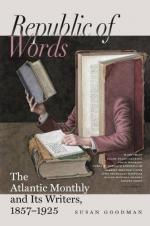The war broke out in the mean time, and there were fears lest the vessel in which the instrument might be shipped should fall a victim to some of the British corsairs sailing under Confederate colors. But the Dutch brig “Presto,” though slow, was safe from the licensed pirates, unless an organ could be shown to be contraband of war. She was out so long, however,—nearly three months from Rotterdam,—that the insurance-office presidents shook their heads over her, fearing that she had gone down with all her precious freight.
“At length,” to borrow Dr. Upham’s words, “one stormy Sunday in March she was telegraphed from the marine station down in the bay, and the next morning, among the marine intelligence, in the smallest possible type, might be read the invoice of her cargo thus:—
“’Sunday Mar. 22
“’Arr. Dutch brig Presto, Van Wyngarten, Rotterdam, Jan. 1. Helvoet, 10th Had terrific gales from SW the greater part of the passage. 40 casks gin JD & M Williams 8 sheep Chenery & Co 200 bags coffee 2 casks herrings 1 case cheese W. Winsel 1 organ JB Upham 20 pipes 6 casks gin JD Richards 6 casks nutmegs J Schumaker 20 do gin 500 bags chickory root Order,’ etc., etc.
“And this was the heralding of this greatest marvel of a high and noble art, after the labor of seven years bestowed upon it, having been tried and pronounced complete by the most fastidious and competent of critics, the wonder and admiration of music-loving Germany, the pride of Wuertemberg, bringing a new phase of civilization to our shores in the darkest hour of our country’s trouble.”
It remains to give a brief history of the construction of the grand and imposing architectural frame which we have already attempted to describe. Many organ-fronts were examined with reference to their effects, during Dr. Upham’s visits of which we have traced the course, and photographs and sketches obtained for the same purpose. On returning, the task of procuring a fitting plan was immediately undertaken. We need not detail the long series of trials which were necessary before the requirements of the President and Directors of the Music-Hall Association were fully satisfied. As the result of these, it was decided that the work should be committed to the brothers Herter, of New York, European artists, educated at the Royal Academy of Art in Stuttgart. The general outline of the facade followed a design made by Mr. Hammatt Billings, to whom also are due the drawings from which the Saint Cecilia and the two groups of cherubs upon the round towers were modelled. These figures were executed at Stuttgart; the other carvings were all done in New York, under Mr. Herter’s direction, by Italian and German artists, one of whom had trained his powers particularly to the shaping of colossal figures. In the course of the work, one of the brothers Herter visited Ludwigsburg for the special purpose of comparing his plans with the structure to which they were to be adapted, and was received with enthusiasm, the design for the front being greatly admired.




